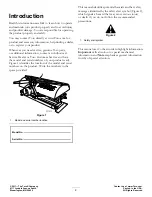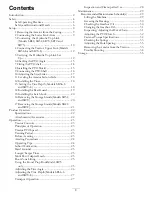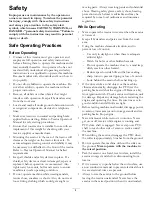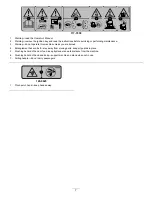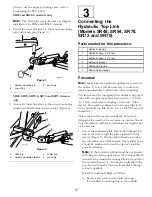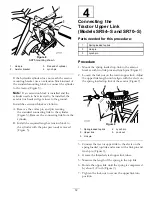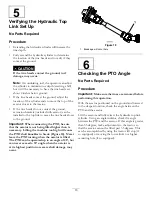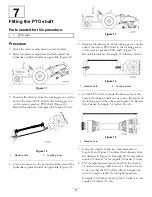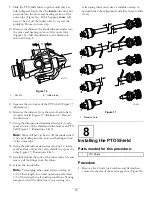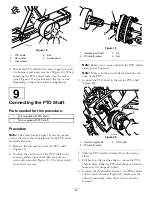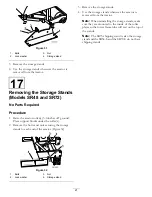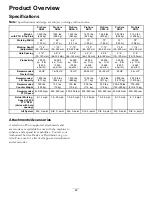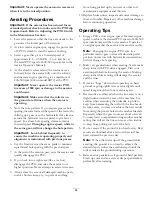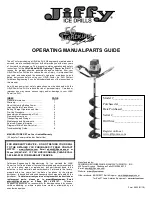
(Figure 5). Remove the connecting link from the
cylinder.
B. Install the rotational block to the cylinder with
the pins previously removed (Figure 5).
Figure 5
1.
Aerator hitch pin
7.
Tractor link pin
2.
Hydraulic top link
8.
Clevis & lynch pin
3.
Rotational block
9.
2–1/2 foot hydraulic hose
4.
Connecting link
10.
3–1/2 foot hydraulic hose
5.
3 inch extension block
11.
Hose quick couplings
6.
5 inch extension block
12.
Tractor hydraulic ports
2. Connect the 3–1/2 foot long hydraulic hose to the
hydraulic top link port which is closest to the aerator
Figure 5. Apply Teflon tape or pipe thread sealant to
the hose threads to prevent any leaks.
3. Connect the 2–1/2 foot long hydraulic hose to the
hydraulic top link port which is closest to the tractor
(Figure 5). Apply Teflon tape or pipe thread sealant
to the hose threads to prevent any leaks.
4. Install quick couplings to the hydraulic hoses
(1/2–14 NPTF hose end thread size). Apply Teflon
tape or pipe thread sealant to the hose threads to
prevent any leaks.
5. Connect the two hydraulic hose quick couplings to
the ports provided on the tractor.
6. Start the tractor engine and operate the tractor spool
valve to check the extend and retract motion of the
hydraulic top link.
Note:
Reverse the hose connections, at the tractor,
if they do no agree with the tractor control operation.
7. Secure the rod end of hydraulic top link to the most
forward hole possible in the aerator bracket with link
pin and lynch pin (Figure 6, Figure 7 or Figure 8).
Important:
When securing the rod end of
the hydraulic link, make sure to use the most
forward mounting holes in the mounting bracket
so there is enough clearance for the barrel of the
cylinder when retracted.
Figure 6
SR54 and SR70 mounting shown
1.
Rod end of cylinder
3.
Link pin
2.
Lynch pin
4.
Aerator bracket (forward
holes)
Figure 7
SR48 and SR72 mounting shown
1.
Lynch pin
3.
Link pin
2.
Aerator bracket
4.
Rod end of cylinder
11


